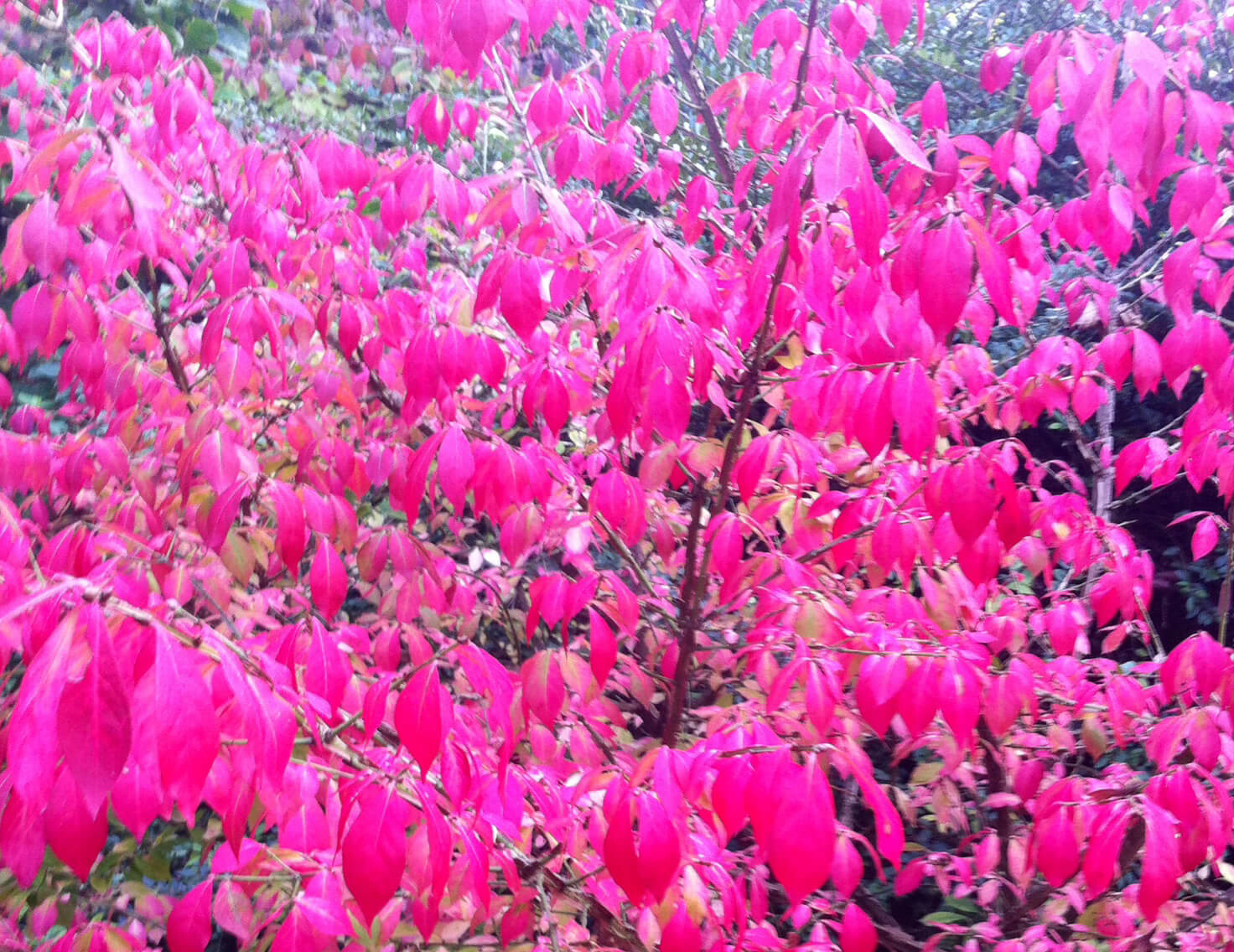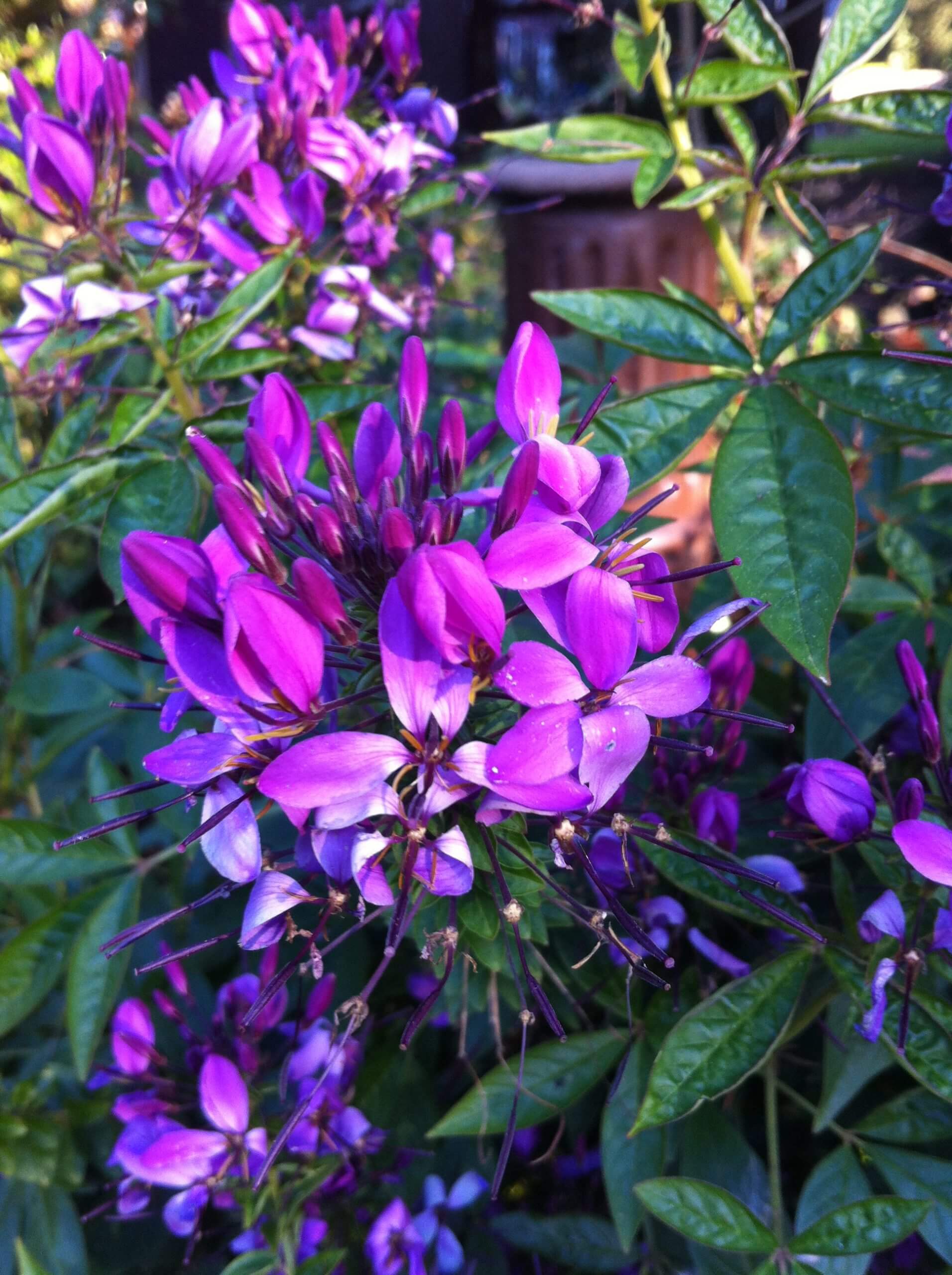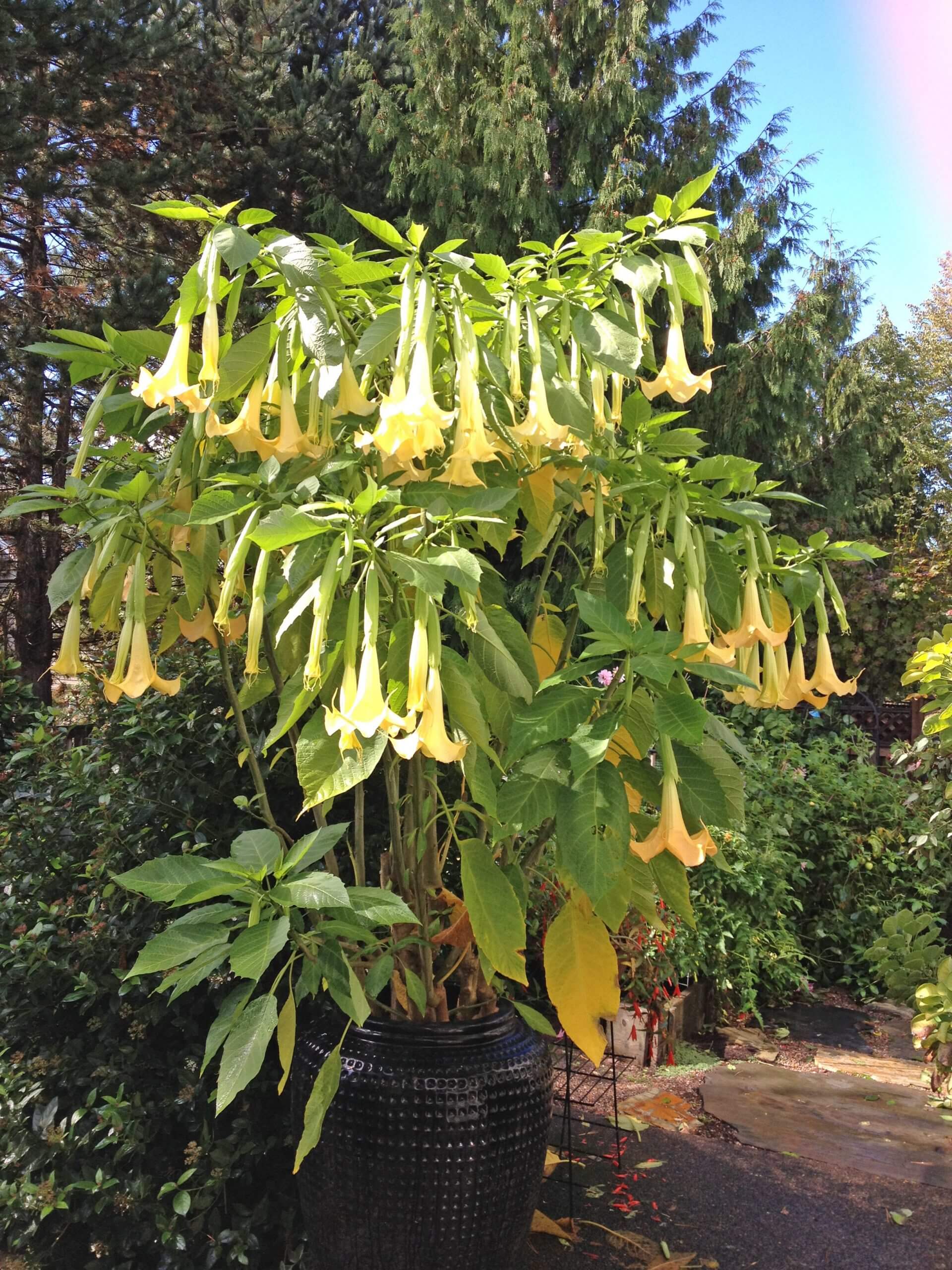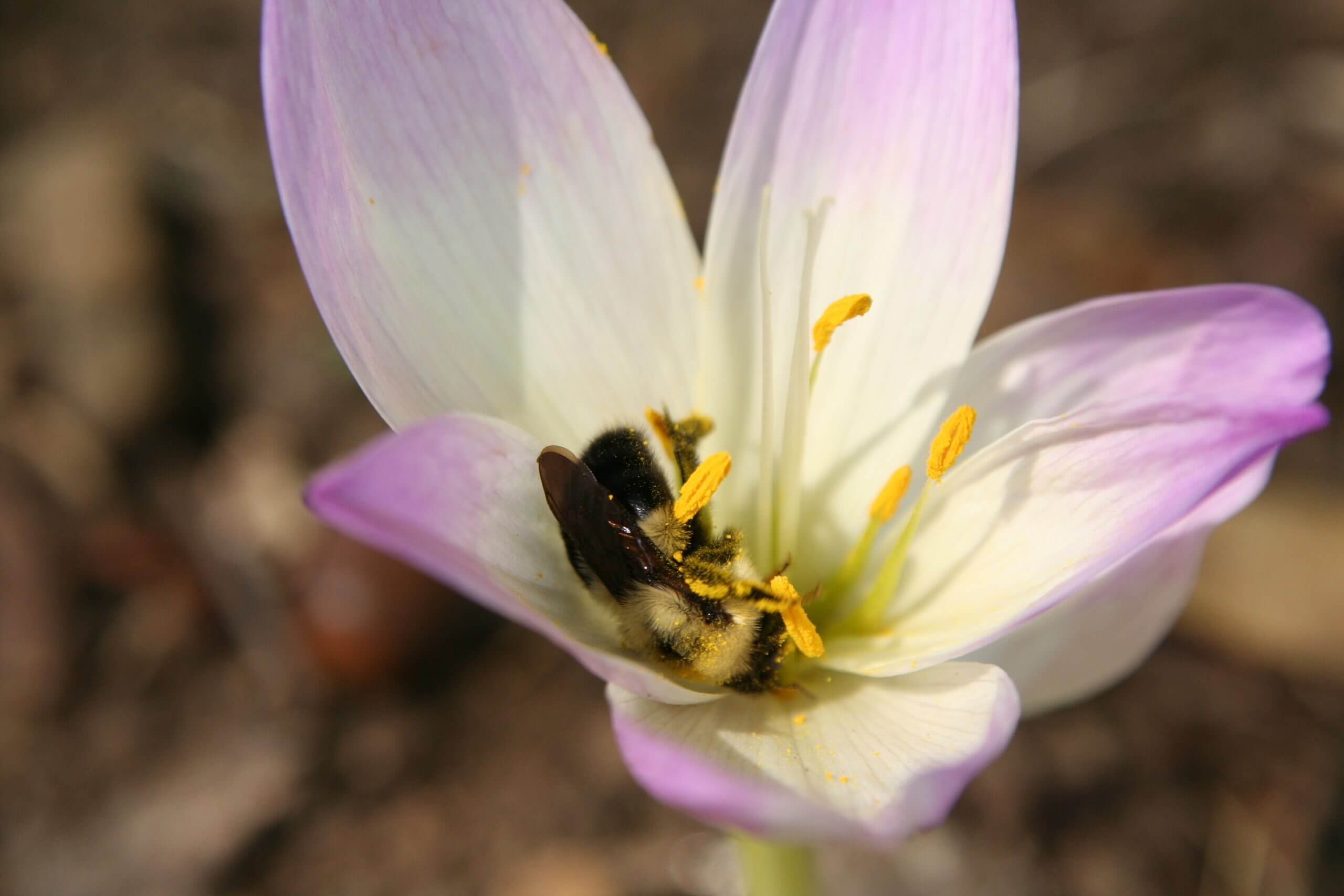
Last week when I saw my neighbor Janet working in her garden, she wanted me to see her blooming autumn crocus (Colchicum autumnale). While not actually a crocus, it resembles one and many gardeners know it by that name. Janet told me that whenever she sees the light pink flowers appear, she knows that fall is here.
Another neighbor has a angel’s trumpet (Brugmansia hybrid), growing in a large pot, which they have successfully overwintered in their garage for the past six years. It has gotten quite large, and even though they cut it back severely each fall before it goes into their low light, cool garage, by midsummer it recovers. Even by early June it is difficult to imagine that just a few months before it was severely pruned and leafless. Over the past several years it has displayed one unique feature in October; it produces a profusion of blooms as if to say, “Here is my grand finale before winter.” Upwards of 50 flowers are displayed at one time, and the evening fragrance is magnificent.

I grow at least one Brugmansia in my garden each summer and always plant it in a large container. Once warm weather arrives, angel’s trumpets grow very fast and require frequent watering. I have found that the best soil mix for this plant is Black Gold Waterhold Cocoblend Potting Soil because the coconut pith (coir) holds needed moisture so well. Brugmansias also do best with a good supply of fertilizer, both at time of planting and throughout the year. When planting, I mix an all purpose fertilizer into the soil. I continue to use this fertilizer every couple of weeks during the summer.
Here in the Pacific Northwest, we have been having a spectacular fall season, no rain, warm days and cool nights. As I look out into my garden, I am thrilled to see so many plants still in bloom and looking good. This spring I planted Cleome hassleriana, commonly called spider flower, because of its very long stamens, and it has been a non-stop bloomer since early spring. Even now in mid-October it is still in full bloom. While the plants I have are purple, they also come in pink and white, and next year I will be adding a grouping of white.

Many deciduous plants are beginning to turn color, and as I drove through downtown Portland earlier this week, many of the maple trees along the street were turning to a blaze of color. For a homeowner with limited space, it is difficult to find a plant that provides more fall color than Euonymus alatus ‘Compactus’ (burning bush). This plant is very easy to grow and once established, after a couple of years, requires very little care. I would suggest mixing it with other flowering shrubs because during the spring and summer it is a rather ordinary green-leafed shrub. But in the fall, the leaves turn scarlet red and usually at the same time, hence the name ‘burning bush’. (Author’s note: in the East, burning bush is not recommended for planting because the Asian native can escape into the wild and cause ecological problems, so be sure it is a good choice in your area before planting (click to learn more).)
Fall is also the time to plant bulbs for spring color. Popular spring flowering bulbs like tulips, hyacinths, crocus and daffodils should be planted now. Whether they are planted in the ground, a pot, or both, it is hard to imagine a spring without seeing some blooming tulips or daffodils. Bulbs require good drainage to thrive, and if soil tends to be heavy the addition of Black Gold Pumice at time of planting will help to improve drainage. I also suggest adding a bulb fertilizer at time of planting to help give bulbs the nutrients they need to thrive and even multiply. Daffodils, under the right conditions, can multiply and naturalize and provide color for many years.
While we are having this glorious autumn weather, get out in your garden and enjoy every minute!

